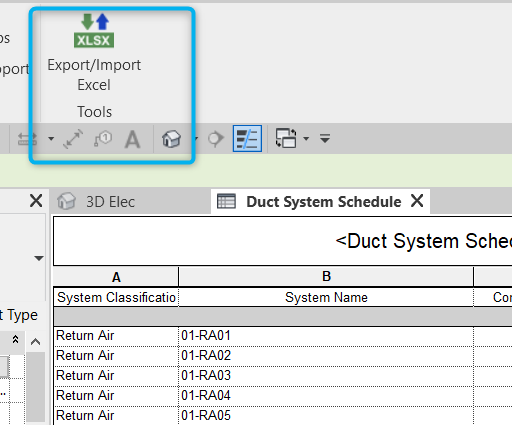Revit Add Ins: Expanding Your Layout Abilities
Wiki Article
Revit Accelerator: Excel Assimilation Techniques for Increasing Efficiency and Partnership
Are you looking to improve your productivity and cooperation while using Revit? Look no more! In this post, we will discover the benefits of incorporating Excel into your Revit workflows. Discover how you can enhance your procedures, optimize partnership, and also learn sophisticated methods for enhancing efficiency. Plus, we will share finest methods for effortlessly incorporating Excel into your Revit tasks. Get ready to supercharge your Revit experience with our Revit Accelerator: Excel Assimilation Techniques!Benefits of Excel Assimilation in Revit
The benefits of Excel integration in Revit are countless and can considerably enhance efficiency and collaboration. By flawlessly linking these 2 effective tools, you can enhance your process and conserve important time. With Excel integration, you can conveniently import and export data between Revit and Excel, allowing you to take advantage of the strengths of both programs.
An additional benefit of Excel integration is the capacity to produce vibrant routines and reports. By linking your Revit model to an Excel spread sheet, any modifications made in Revit will immediately update in the matching Excel file. This makes it simple to create current schedules, amount launches, and other project documents.
Excel integration in Revit likewise enables much better partnership among employee. With the ability to import and export data, you can easily share details with associates who might not have access to Revit. This advertises effective communication and allows for better coordination and decision-making.
Streamlining Process With Revit and Excel
Improving operations with Revit and Excel can greatly boost efficiency and cooperation. By integrating the capacities of Revit and Excel, you can effortlessly move information in between the 2 applications, removing the demand for manual data access and reducing the risk of errors.
Making Use Of Revit and Excel with each other permits you to utilize the staminas of each program - import excel into revit. You can export data from Revit right into Excel, where you can execute intricate calculations, develop charts and graphs, and examine the information in a more efficient and orderly fashion. On the other hand, you can import information from Excel right into Revit, allowing you to quickly update your models and documentation based upon adjustments made in Excel
The combination of Revit and Excel also promotes cooperation among staff member. By sharing Excel data, you can quickly work together and connect on design and construction-related information. This improves control and makes certain that everyone is collaborating with the most up-to-date info.
Making Best Use Of Partnership With Excel and Revit
To make best use of collaboration with Excel and Revit, you can seamlessly update and share design and construction-related information with your group. With just a couple of clicks, you can import Excel spreadsheets into your Revit model, permitting you to conveniently gain access to and adjust the information.One of the key benefits of making use of Excel in combination with Revit is the ability to update information in both programs all at once. Any modifications made in Excel will instantly be reflected in Revit, and the other way around. This makes certain that everybody is collaborating with the most updated information, avoiding confusion and conserving beneficial time.
In addition, Excel provides powerful tools for evaluating and organizing information, which can considerably improve your collaboration efforts. You can produce custom-made records and charts in Excel, helping you to visualize and interact essential job details efficiently. This can be especially helpful when providing information to stakeholders or making notified choices based upon project metrics.
Advanced Strategies for Improving Productivity in Revit Using Excel
By utilizing innovative techniques in Revit, you can significantly raise your productivity by leveraging the power of Excel. With Revit's Excel integration feature, you can link Excel spread sheets straight to your Revit model, allowing you to conveniently handle and upgrade information.
In addition, you can use Excel macros to automate repeated jobs in Revit (revit tools). Macros allow you to tape a collection of actions and play them back with a solitary click, saving you effort and time. For instance, you can produce a macro to instantly generate area schedules or update criterion values wholesale.
Finest Practices for Excel Combination in Revit
Using Excel as an information administration tool in Revit permits for efficient management and upgrading of data. One of the best practices for Excel combination in Revit is to create a clear and organized data structure. By adhering to these ideal techniques, you can effectively use Excel as a data administration device in Revit and increase your performance and collaboration.Conclusion
In final thought, incorporating Excel with Revit can significantly improve productivity and collaboration in the design procedure. By leveraging the power of Excel, Revit users can attain greater degrees of productivity and cooperation in their projects.With Excel combination, you can conveniently import and export information between Revit and Excel, permitting you to leverage the staminas of both programs.
One of the crucial benefits of Excel revit add ins combination is the capacity to utilize Excel formulas and features within Revit. By linking your Revit design to an Excel spread sheet, any kind of changes made in Revit will instantly upgrade in the corresponding Excel data. On the other hand, you can import information from Excel right into Revit, allowing you to swiftly update your models and paperwork based on modifications made in Excel.
With Revit's Excel assimilation feature, you can connect Excel spreadsheets directly to your Revit design, allowing you to quickly handle and update data.
Report this wiki page